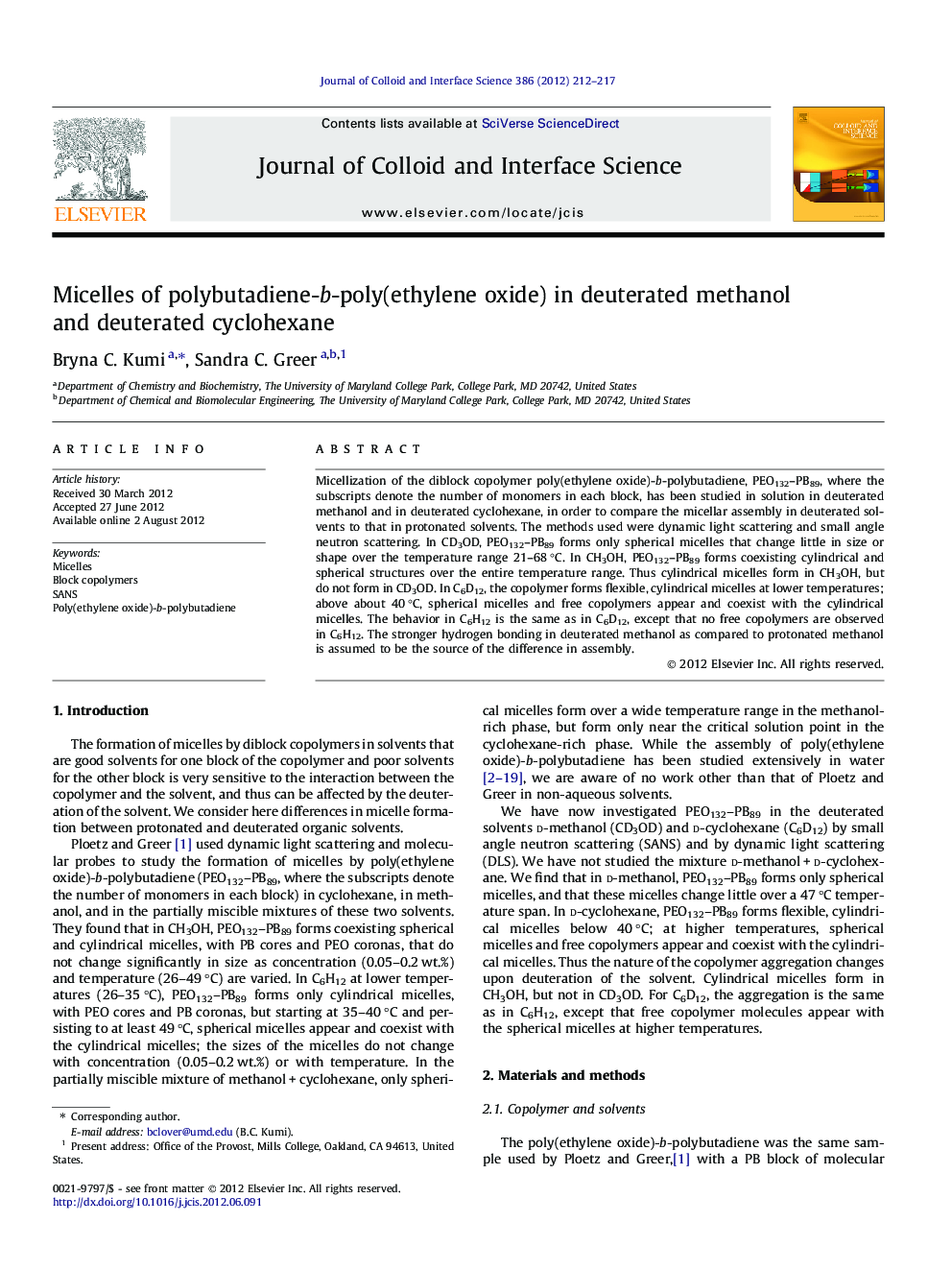| Article ID | Journal | Published Year | Pages | File Type |
|---|---|---|---|---|
| 608111 | Journal of Colloid and Interface Science | 2012 | 6 Pages |
Micellization of the diblock copolymer poly(ethylene oxide)-b-polybutadiene, PEO132–PB89, where the subscripts denote the number of monomers in each block, has been studied in solution in deuterated methanol and in deuterated cyclohexane, in order to compare the micellar assembly in deuterated solvents to that in protonated solvents. The methods used were dynamic light scattering and small angle neutron scattering. In CD3OD, PEO132–PB89 forms only spherical micelles that change little in size or shape over the temperature range 21–68 °C. In CH3OH, PEO132–PB89 forms coexisting cylindrical and spherical structures over the entire temperature range. Thus cylindrical micelles form in CH3OH, but do not form in CD3OD. In C6D12, the copolymer forms flexible, cylindrical micelles at lower temperatures; above about 40 °C, spherical micelles and free copolymers appear and coexist with the cylindrical micelles. The behavior in C6H12 is the same as in C6D12, except that no free copolymers are observed in C6H12. The stronger hydrogen bonding in deuterated methanol as compared to protonated methanol is assumed to be the source of the difference in assembly.
Graphical abstractFigure optionsDownload full-size imageDownload high-quality image (126 K)Download as PowerPoint slideHighlights► We compare micelle assemblies of PEO–PB in deuterated and protonated solvents. ► Cylindrical and spherical micelles form in CH3OH; only spheres occur in CD3OD. ► Cylindrical micelles change to spherical micelles and unimers when heated in C6D12. ► Similar changes occur in C6H12, however no free polymer is apparent. ► Solvent deuteration can greatly affect micellization behavior of this copolymer.
